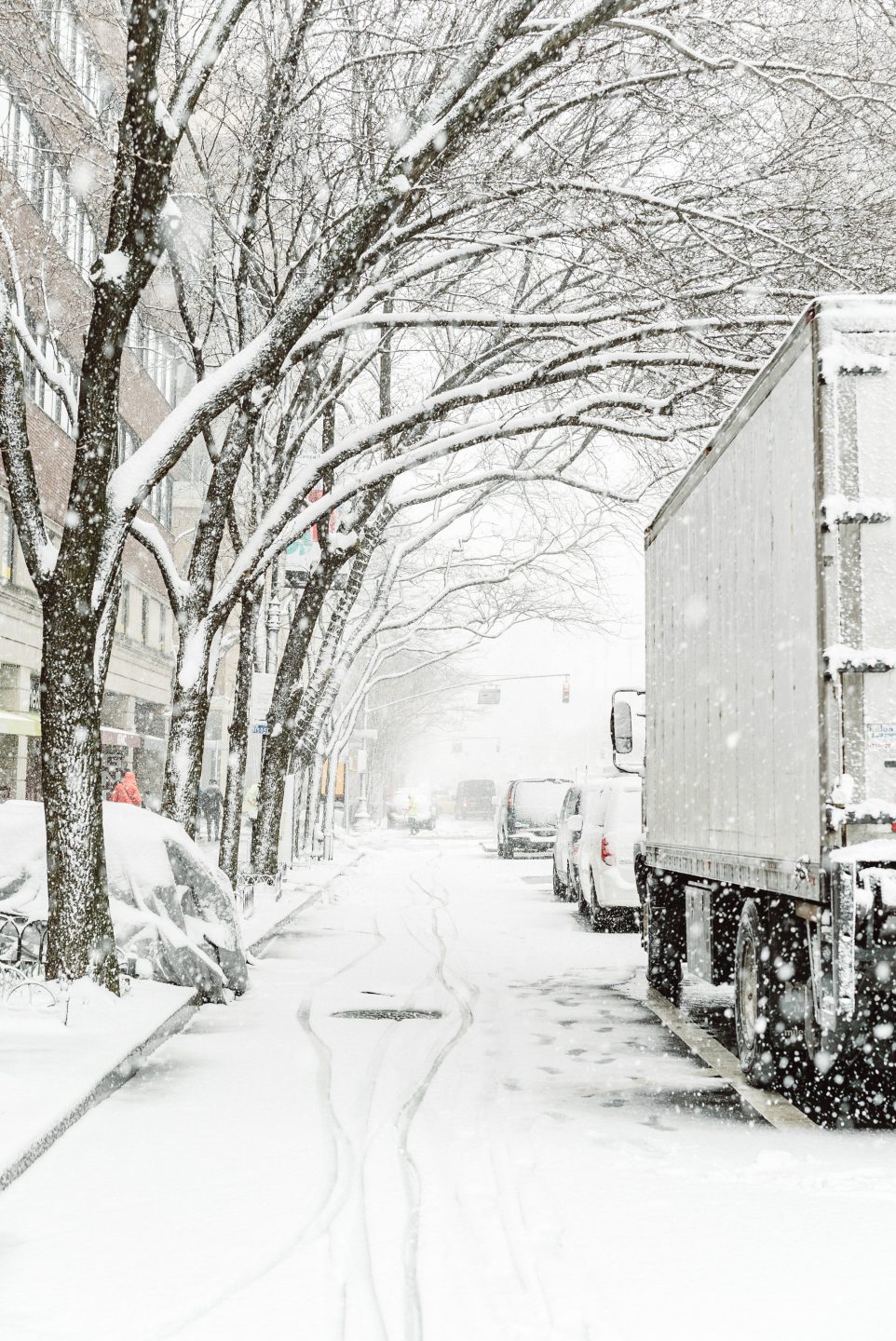Environment Canada reported that a record 32.8 centimetres of snow fell on October 2, 2018 in Calgary, breaking a snowfall record of 4.6 centimetres in 1954. It also broke the one-day snowfall record in October, which was 30 centimetres in 1914.
The snowfall came fast and heavy, leaving roads and highways slippery for morning commuters. This unseasonable early snowfall caused chaos on the streets of Calgary, creating gridlock and completely closing some roadways.
STRANDED MOTORISTS
In the late afternoon on October 2, 2018 a section of the Trans-Canada Highway west of Calgary was shut down in both directions. Travellers were stranded on this roadway for more than 13 hours due to poor weather conditions.
RCMP first began issuing warnings about poor driving conditions starting at 11:00 a.m. on Tuesday. They requested that motorists avoid traveling on Highway 1, west of Calgary.
RCMP reported that they closed Highway 1 and worked with highway crews and tow trucks to clear the roads and assist motorists to safety. Fortunately, there were no fatalities as a result of the weather related collisions and no severe injuries to the stranded motorists.
MOTOR VEHICLE COLLISIONS
Calgary Police Service reported 251 collisions in the city between 11p.m. Monday, when the snow began to fall, until 3:30 p.m. on Tuesday.
In Calgary, ice and snow on roadways may be a contributing factor in car accidents every winter. Sometimes the actions or inactions of drivers play a part in car accidents that occur in winter weather, such as failing to slow down when road conditions are hazardous or driving vehicles that are not adequately prepared for snow and ice (i.e. driving on tires with little or no tread and/or poorly functioning brakes).
However, there are some motor vehicle accidents that are caused when municipalities and government bodies fail to take reasonable care to maintain public roadways and keep them free of ice and/or snow. When this failure occurs and leads to car accidents and personal injuries, municipalities may be held liable for the accidents. Municipalities are required to take all necessary action to keep road users reasonably safe and must have and adhere to clear policies for inspecting road conditions and responding to problems in a timely manner.
CALGARY TRANSIT
Calgary Transit drivers and commuters also experienced a difficult day on Tuesday as approximately 80 buses were stuck in snowbanks and had difficulty traversing slippery hills.
Officials reported that city buses do not have snow tires. Shane Keating, chair of Calgary’s Transportation and Transit committee, reported that he is hesitant to spend more money on winter tires for city buses as he is uncertain about their effectiveness.
Calgary Transit reported that buses that travel on hills were experiencing difficulty driving on slippery roads on Tuesday morning. Commuters were asked to either wait at the top or bottom of the hills for the bus.
TIPS FOR SAFE WINTER DRIVING
There are three key elements to safe winter driving: stay alert; slow down; and stay in control.
Before winter arrives, it is essential to schedule a maintenance check-up to inspect the vehicle’s tires and tire pressure, battery, belts and hoses, radiator, oil, lights, brakes, exhaust system, heater/defroster, wipes, and ignition system. It is also recommended that your vehicle be equipped with four winter tires for improved traction and control if you are driving in severe winter conditions.
The following are additional important recommendations to follow as an Alberta motorist driving in the winter:
- Keep your gas tank properly full: At least half a tank is recommended. The extra fuel can help reduce moisture problems in your fuel system and adds extra weight to your vehicle.
- Always check the weather and the road conditions before venturing out: Give yourself extra time to get to your destination or postpone your trip, if necessary.
- Be sure to clean all of the snow off of your vehicle, including your roof, before leaving: Ice and snow that comes off your vehicle can limit visibility and can be dangerous to other travellers.
- Adjust your driving to weather conditions: Be sure to slow down, use your turn signals well in advance, and give yourself plenty of room for braking.
- Gear down for uphill climbs and downhill grades: This can help avoid brake wear and tear and reduce your chances of sliding.
- If your vehicle begins to skid, take your foot off of the brake and steer in the direction you want to go.
- Keep an emergency kit in your car: This kit should include flashlight, reflective safety triangles or flares, a small first-aid kit, snow brush and scraper, bag of abrasive material, extra windshield washer fluid, booster cables, a small tool kit, a warm blanket, and bottles of water.
The personal injuries lawyers at Cuming & Gillespie LLP have extensive experience in filing successful claims for innocent victims of car accidents. If your serious injuries were the result of negligence on the part of a municipality or another motorist, you may have the right to sue for damages. Please contact our office either online or at 403-571-0555 to make an appointment for a free case evaluation to speak with our experienced personal injury lawyers. We look forward to helping you obtain the compensation that you deserve.

